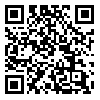Wed, Dec 10, 2025
[Archive]
Volume 30, Issue 2 (2020)
IJAUP 2020, 30(2) |
Back to browse issues page
Download citation:
BibTeX | RIS | EndNote | Medlars | ProCite | Reference Manager | RefWorks
Send citation to:



BibTeX | RIS | EndNote | Medlars | ProCite | Reference Manager | RefWorks
Send citation to:
Rafieian M, Ghazaie M. Examining the Causes of Crisis in Urban Planning, with an Emphasis on Radical Planning Theory. IJAUP 2020; 30 (2)
URL: http://ijaup.iust.ac.ir/article-1-489-en.html
URL: http://ijaup.iust.ac.ir/article-1-489-en.html
1- Department of Urban and Regional Planning, Faculty of Arts and Architecture, Tarbiat Modares University, Tehran, Iran , rafiei_m@modares.ac.ir
2- Department of Urban and Regional Planning, Faculty of Arts and Architecture, Tarbiat Modares University, Tehran, Iran
2- Department of Urban and Regional Planning, Faculty of Arts and Architecture, Tarbiat Modares University, Tehran, Iran
Abstract:
The advent of modern planning in the early twentieth century and its failure in practice caused the emergence of planning crisis which theory-practice gap has been its central theme of debate. This gap begot various readings of urban planning theory to make theory and practice much closer. Radical planning, as one of these readings, deprives the power of central government in favour of empowering the citizens and considers the highest level of participation in decision-making processes for them. Nevertheless, it failed to address the planning crisis and theorists continued theory making to address the crisis. Hence, the current study aims to investigate radical planning with a critical perspective by using a deep-seated research method and referring to related topics. Results ended in finding reasons led to the failure of radical planning to address planning crisis. The uncertainty of radical planning process, the idealistic looks of theorists and radical planning mismatch with the current forms of state planning are three main reasons which hindered it from addressing planning crisis despite being the turning point of urban planning theories.
Type of Study: Research Paper |
Subject:
Urban Planning
| Rights and permissions | |
 | This work is licensed under a Creative Commons Attribution-NonCommercial 4.0 International License. |




